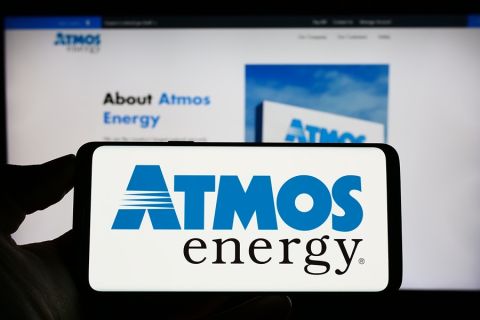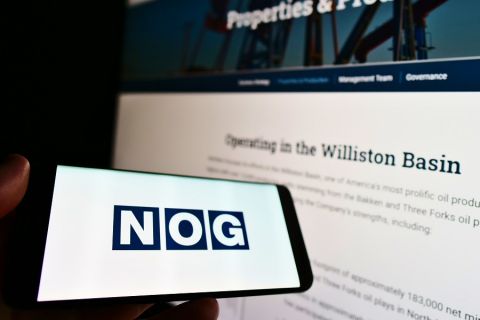Presented by:

Editor's note: This article appears in the special OTC edition of the E&P newsletter. Subscribe here.
Operators of aging offshore production facilities face a host of challenges in today’s environment. With capital spending at historic lows, there is a pressing need to extend the useful life of brownfield sites and maximize returns from existing investments. Maintenance planning plays an integral role in achieving these objectives. After all, profitability is contingent on predictable production. Therefore, offshore maintenance departments need to be able to work proactively to ensure asset reliability and deliver targeted performance requirements.
Asset performance management (APM) has been effectively used to accomplish this feat in several industries that are far along on the digital transformation maturity curve (e.g., aviation, manufacturing and chemical processing). While oil and gas has been comparatively slower in its adoption, the growing network of Internet of Things and edge devices, coupled with recent advances in data analytics, have opened the door to new opportunities to create value.
What is APM?
While it is sometimes touted by digital solutions providers as a standalone software tool, APM is, at its core, a process that enables an organization to translate business objectives into targeted asset-related decisions, plans and activities. The ultimate goal of APM is to improve the maintenance and management of assets through condition-based monitoring and analysis.
However, its scope is much broader, covering people, processes, technology, management practices and systems, data, reporting and other factors that determine business performance.
Reliability-centered maintenance (RCM) principles form the foundation of any APM process. In combination with mitigation strategies to reduce the consequences of component failure, APM aims to help operators ensure that every piece of critical equipment in their facility performs its expected function within a specific business context.
APM also aims to drive efficiencies in multidiscipline workflows by creating a connected enterprise system where disparate data streams from all equipment and systems within a process plant are aggregated and organized into a single asset hierarchy. Within the APM framework, data generated from various assets are continuously compared against expert-based models.
In the case of APM4O&G from Siemens Energy, the models are derived from tens of millions of hours of accumulated operational and inspection data from the company's global installed equipment base, along with input from engineers and subject matter experts with extensive experience operating and maintaining equipment.
APM effectively puts this combined equipment intelligence at the fingertips of users so early indications of failure can be identified, and the proper corrective actions can be taken while keeping in mind the criticality of the asset and constraints of the operator or facility.
With APM, no additional IT project is needed. Instead, everything that a business needs to support RCM is delivered as a natural output of the system.
Using APM to address today’s maintenance challenges
Historically, one of the primary hurdles to planning and executing RCM at an offshore process plant has been a lack of visibility into the as-is condition and performance of equipment. While significant advancements in both software and hardware have solved this problem, a new challenge has emerged. Massive data streams from the increasing number of operational technology and IT sources, along with information gathered from manual inspections and service activities, have overwhelmed plant personnel, making it all but impossible to prioritize and rationalize maintenance activities across a facility.
Today, many companies cite a heavy reliance on decision-support tools that utilize advanced analytics to derive actionable insights from raw data. Unfortunately, these solutions are not a direct replacement for domain expertise. The problem looms especially large in oil and gas, as a great deal of maintenance knowledge resides in workers who have either already retired or will soon.
APM can address this issue when effectively deployed and help operators truly shift from a reactive to predictive maintenance approach.
Recommended Reading
Occidental Increases Annual Dividend by 22%
2024-02-11 - Occidental Petroleum Corp.’s newly declared dividend is at an annual rate of $0.88 per share, compared to the previous annual rate of $0.72 per share.
Atmos Energy Announces Quarterly Dividend
2024-02-11 - Atmos’ dividend marks the company’s 161st consecutive quarterly dividend.
From Restructuring to Reinvention, Weatherford Upbeat on Upcycle
2024-02-11 - Weatherford CEO Girish Saligram charts course for growth as the company looks to enter the third year of what appears to be a long upcycle.
Atlas Energy Solutions Declares Dividend
2024-02-09 - Atlas Energy’s dividend represents a 5% increase from the previous quarter’s dividend.
Northern Oil and Gas Ups Dividend 18%, Updates Hedging
2024-02-09 - Northern Oil and Gas, which recently closed acquisitions in the Utica Shale and Delaware Basin, announced a $0.40 per share dividend.





